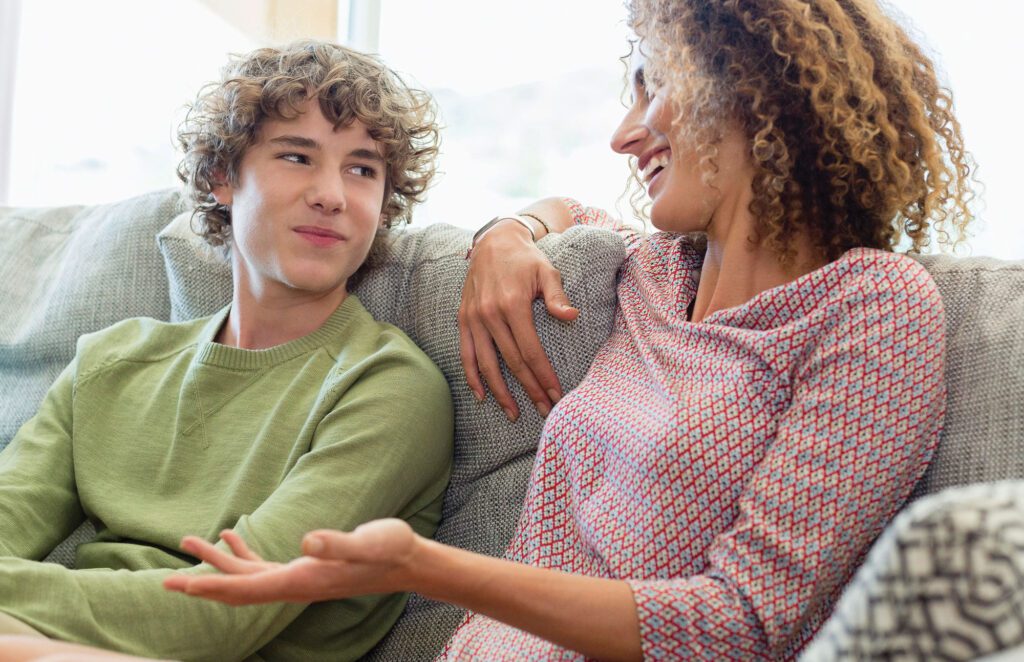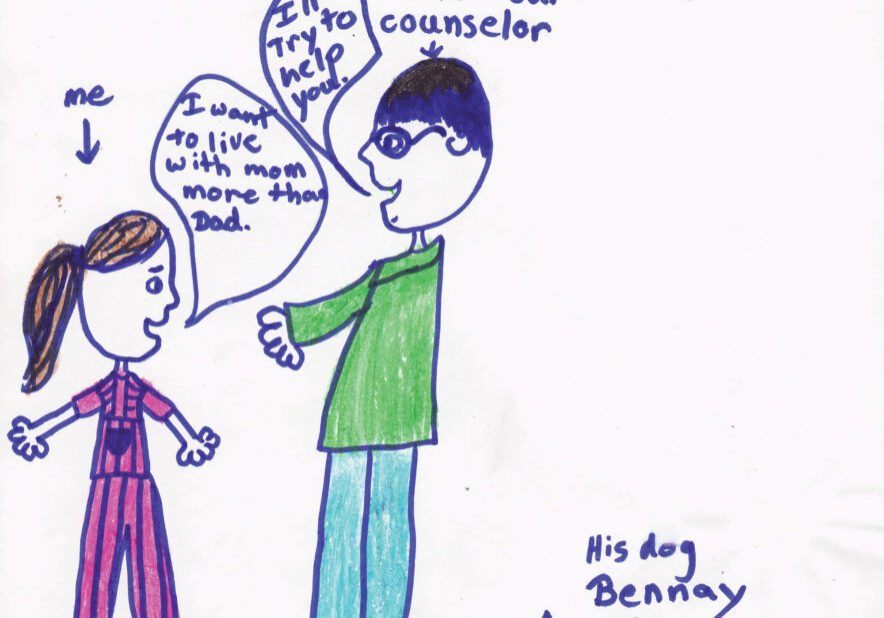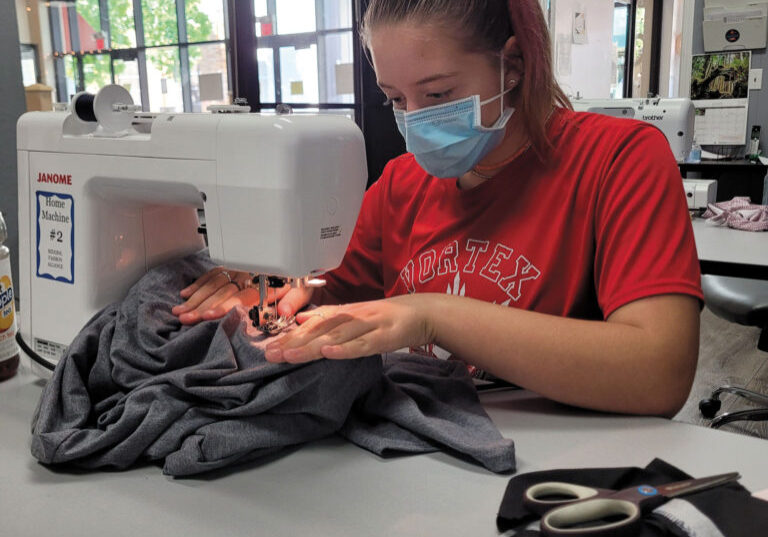Showing up in our lives and in the lives of our children is the juicy nectar of living fully. There is big meaning in that sentence. Take a moment to think about what the words “showing up” really mean. You might think, “I showed up at work today.” That is a form of showing up. Or, you might say, “I showed up for my friend who was grieving because her mother passed away.” That is an emotionally deeper form of showing up. Another way of showing up might be if someone asks you to do them a favor. If you do it, you are actively showing up in service.
How you show up for your child has life-long impacts
Did you know that showing up in particular ways for your child can positively impact your child’s mind/body wellness across their lifetime? A child’s brain structure is greatly influenced by the kind of parenting received. When parents consistently show up for their children, research shows that the child’s neurobiology (brain-body function) is strengthened to build resilience. More importantly, consistently showing up for your child decreases the negative impact of chronic stress in your child’s adulthood, such as increased health risks including heart disease, mental illnesses like depression and anxiety disorders, and substance misuse. Chronic stress has long-lasting negative consequences for cognitive functioning, behavioral health, immune functioning and physical health. But what does showing up in the lives of our children actually mean?
As a therapist, I often work with parents who feel hopeless, exhausted and/or overwhelmed about the situation in which they find themselves with their children’s behavior. Hopelessness prevails because of the constant negative feedback loops in which they are caught with their children. Sometimes I get snared by the negative feedback loops, too, and then I don’t show up in a helpful way for others. Hopelessness, plus helplessness, equals despair.
The influence of positive and negative feedback loops
What do these feedback loops have to do with showing up? Positive feedback loops support parents to show up in loving, grounded and secure ways for their kids. Negative feedback loops do the opposite.


Here is an example of a negative feedback loop:
Before leaving home for school, your child insists on getting to hang out with friends for a while after school. You say, “No, I don’t want you hanging around after school with other kids unsupervised when who knows what will happen?”
Your child’s side of the argument goes like this: “You never trust me to do anything by myself or with my friends. You are always hovering over me like a helicopter parent. Why don’t you ever trust me?”
You throw up your hands and tell him, “Just get in the car before you make us both late.” Your child flashes a disapproving face, rolls his eyes and loudly stomps off to the car. Both of you ignore one another on the ride to school.
At the end of the day, you wait for your child to come out of school and get in the car, but most of the kids have already left. You think, “Where is that darned kid? He better not be off messing around with his friends, because I told him no.”
You call out his name and a few minutes later he shuffles in slow motion to the car with his nose slightly tipped up and ignoring your hairy-eyeball stare. You both take the ride home just as angrily as you arrived at school that morning.
Changing the dynamic by choosing hope
If this seems like something that happens to you, too, then I challenge you to change this dynamic by curating a day of hope-filled, positive feedback loops that facilitate showing up for your child. Choose the day you are going to have, rather than walking through the day with the misconception that life just happens to you.
If, upon reading about creating a positive feedback loop day, you thought, “That sounds too hard” or some other negative thought, you were beginning a negative feedback loop. If the challenge of working to create positive feedback loops intrigues you, then you just stepped into a positive feedback loop.
Steps for hope-filled days
Start by looking for things that are hopeful in, around and outside of you. If your eight-year-old son just yelled and threatened to punch you, and you felt hopeless or angry like always, you are in a negative feedback loop. Right in that moment choose to see your child as a ball of creative energy, harmed by the ups and downs of the world, who has the organic material built in to become healed and healthy. Then smile and give him a hug. Don’t think twice about whether you get a hug back or not. You are now in a positive feedback loop.
Plan to feel hope-filled by the end of the day. Tired and hope-filled can coexist. Where do you find solace, joy, hope? Go get it, seek it, do it, think about it, enjoy it. Take a mind vacation somewhere lovely for five minutes. If you have started to think, “That won’t work”, you are in a negative feedback loop. If you are starting to get the picture and even a little excitement of possibility is growing inside you, then you are in a positive feedback loop.
Cultivate relationships with more positive feedback loop connections. The amazing thing about feedback loops is they are contagious and feed off similar feedback loops. You can have negative feedback loops connecting with other negative feedback loops or the opposite. Today, choose to cultivate hope-filled positive feedback loops for yourself in as many places with as many people as you can.
Check in with yourself at the end of the day to see how you feel—more positive or more negative. Your skill creating positive feedback loops will improve with practice, so take these steps again tomorrow for an even better outcome.
Secure attachments are a foundation for healthy interactions
Dr. Dan Siegel, celebrated neuroscientist and clinician, says parents need to practice what he calls “The Four S’s” to truly show up for their children. The Four S’s help kids feel (1) safe—being and feeling safe from harm; (2) seen—acknowledged and accepted for who they are; (3) soothed—comforted when distressed; and (4) secure— trust that they can feel at home in the world, where in time they can internalize feeling safe, seen and soothed for and by themselves. This is what is commonly referred to as a secure attachment. Secure attachment leads to a strong sense of self, a positive outlook on life, stable relationships and the ability to have healthy and flexible boundaries with others across one’s life span.
An example of a positive feedback loop
Let’s replay that negative feedback loop conversation between you and your child, only this time with a positive spin:
Before leaving home for school, your child insists on getting to hang out with friends for a while after school.
You say, “Oh, how long do you think you are wanting to hang out?”
He says, “A couple of hours.”
You say, “That is kind of long to hang out without someone around to make sure you are safe.”
He says, “Mom, you never trust me to do anything by myself or with my friends.”
You say, “You know, you are right about that. Not the trust part. I do trust you. I also really love that cute face of yours and I don’t want anything bad to happen to you. I get you feel ready to hang out after school without an adult there and I want you to have friend time, too. How about this? What if next week I bring a pizza for you and your friends after school so I can meet them for a second and you can hang out for a while? I will just meet them and go read my book in the car. Can we start that way so you get to have time with friends and I can do my job keeping you safe?
He says, “I don’t know.”
You say, “OK, think about it and let me know. I want to find a way to meet both of our needs.”
He says, “Fine, but you know I’m going to grow up sometime, Mom.”
You smile, pulling him in for a quick hug saying, “We better get going or we are going to be late, Sweetie.”
He turns around and heads for the door. The ride to school is pleasant. You are listening to his favorite music and he compromises on the volume. When he leaves the car, you say “I love you.”
He says, “Yeah, yeah, I know” and gives you a twinkly eyed smile.
At the end of the day, he runs toward you as you drive up to the school. He says, “I’m starving. Can we go to Taco Barn?”
You say, “We have seriously good snacks at home. Taco Barn some other day.”
He says, “Fine.”
It takes a small amount of extra time to have a conversation, but the pay-off in the long term is the life-shaping impact of the Four S’s–safe, seen, soothing and secure—and showing up in consistent positive feedback loops. It doesn’t have to be syrupy, just genuine and positive. Kids will be kids, but you can make a huge difference by being a “Four S, positive feedback loop” parent.
Your positive presence profoundly impacts your child
Your reliable positive presence in the life of your child programs the physical structure of your child’s brain for wellness. Predictably showing up in positive feedback loops over time impacts your child’s neurobiology—physical structure, neuro-connectivity, healthy scaffolding for understanding how the world works. It creates blueprints for living healthily, contentedly, joyfully, mindfully and lovingly for the rest of their natural lives. That’s HUGE.
What a gift parents can be for their children’s future. What a gift you can be for your own future. Will you show up in positive feedback loops with your children as much as possible? Will you take the Hope-filled Day Challenge as often as possible to support positive feedback loops and secure, neuro-connectivity with your children? I am hope-filled that you will.
Posted in: Family Life & Support, Youth & Teen
Comment Policy: All viewpoints are welcome, but comments should remain relevant. Personal attacks, profanity, and aggressive behavior are not allowed. No spam, advertising, or promoting of products/services. Please, only use your real name and limit the amount of links submitted in your comment.
You Might Also Like...

A Family Guide to Community Service
Tips for Creating Opportunities to Serve with Your Kids & Teens When children serve others they appreciate their own lives When children participate in community service, they develop a desire to […]

Making Moving Easier For Kids
Whether across the country or just across town, moving is a big adjustment for everyone in the family. Children in particular can feel overwhelmed and uprooted because they are rarely […]

Different Sports for Different Kids: Getting Children to Develop a Lifelong Love of Physical Fitness
At a time when being hooked on smartphones is prevalent in our society, it’s more important than ever to help children (and adults) make physical fitness a priority. But how […]

7 Great Ways to Support a Single Parent
Every single parent has their own story; divorced, never married, widowed, spouse deployed, grandparent raising the grandchild, single parent by choice. The tips below are based on a dozen years […]



